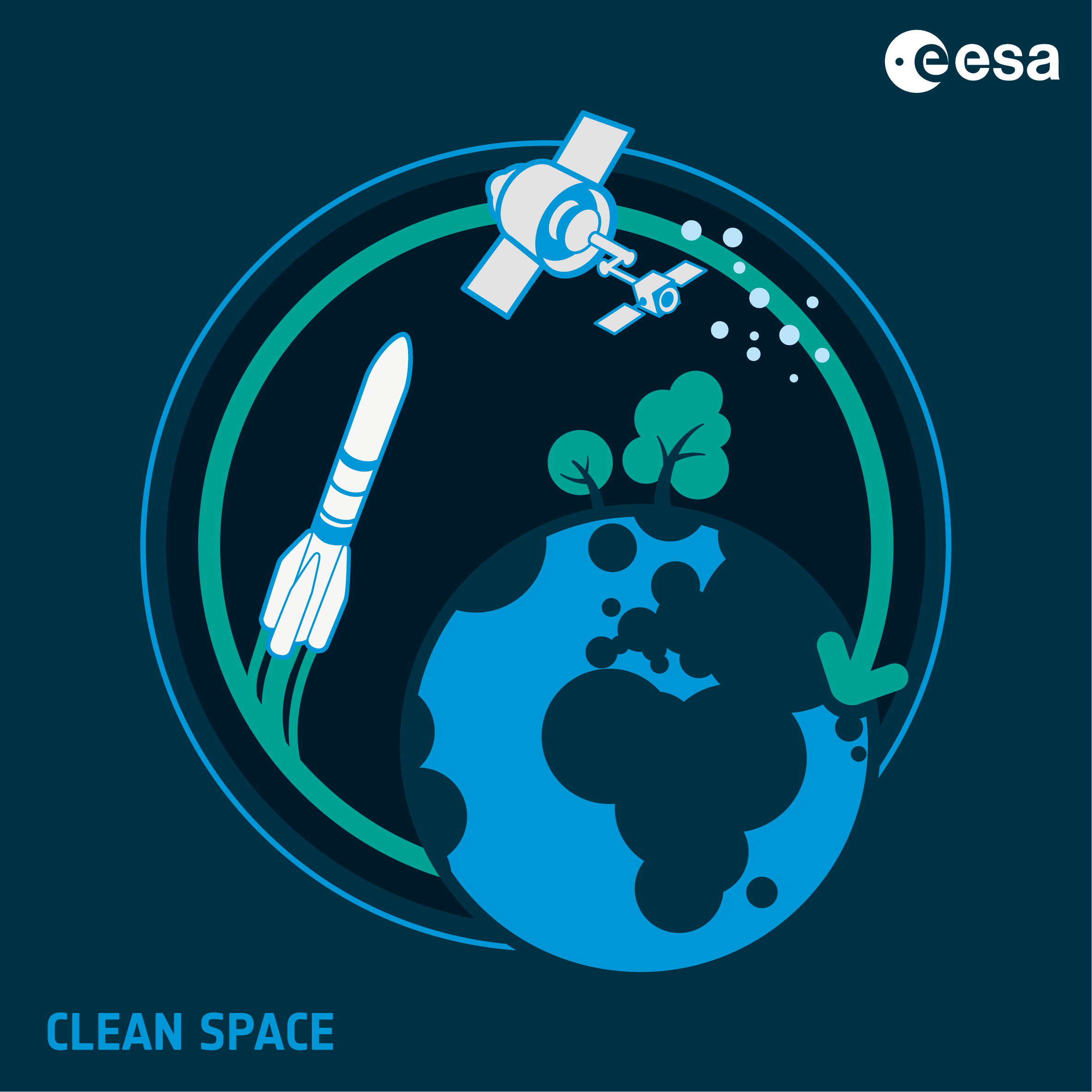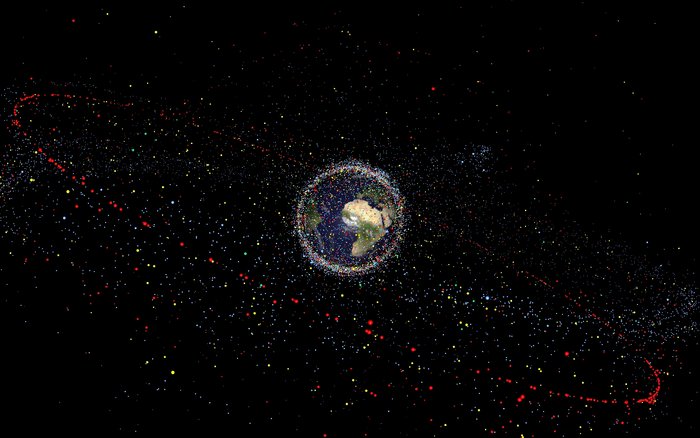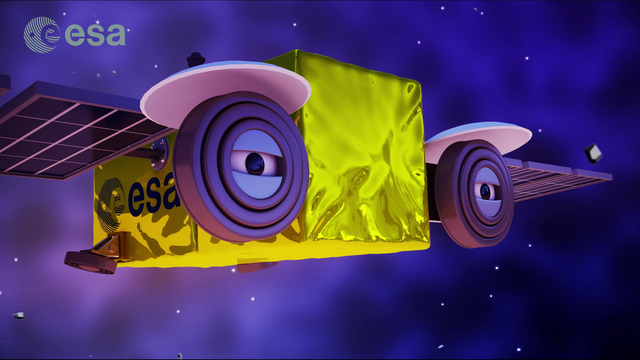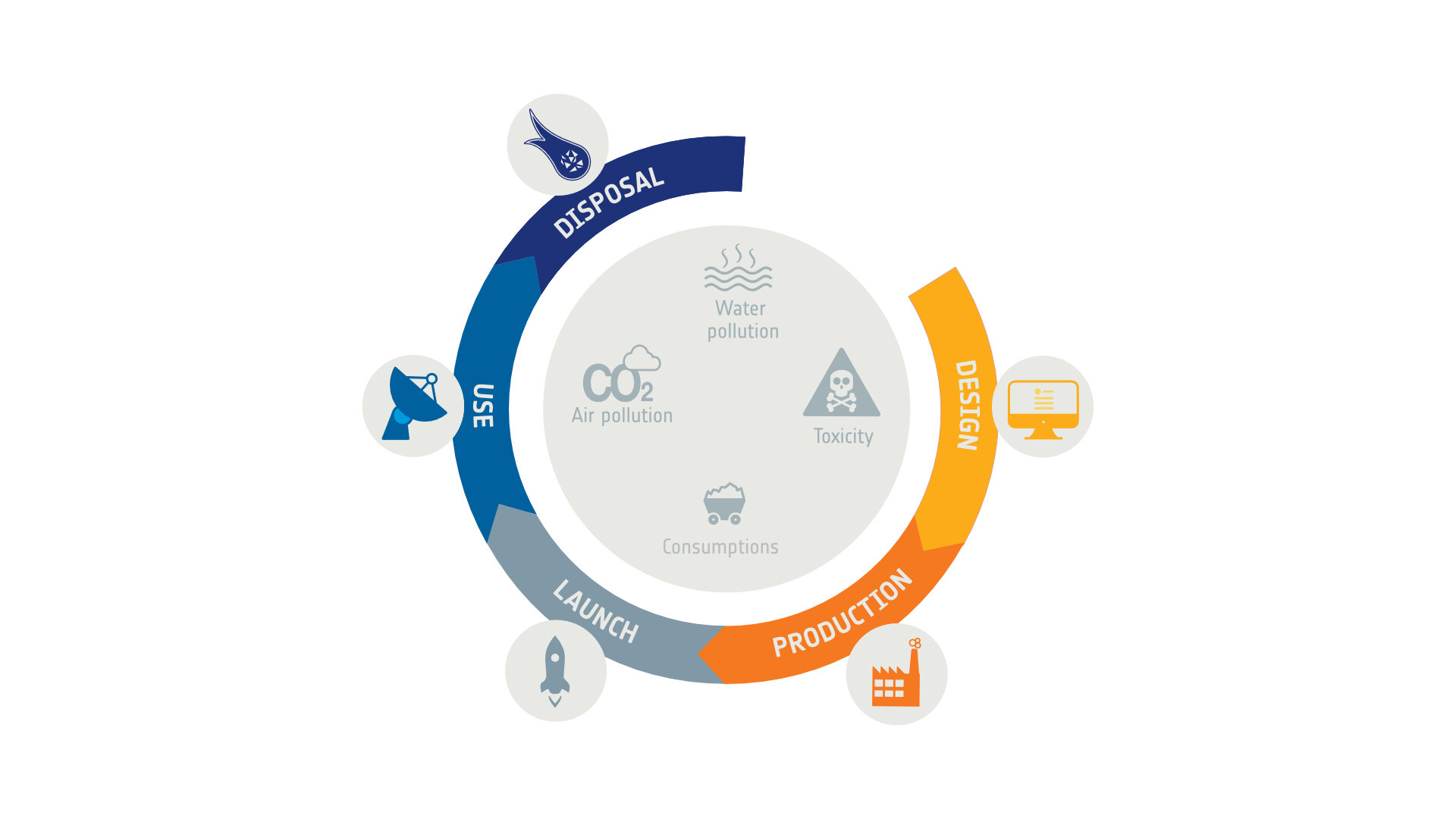One possible way to reduce the casualty risk on ground by debris re-entering the atmosphere is to keep surviving fragments together, reducing the probability of colliding with a person, often at the cost of having a higher impact energy.
Njord Eggen joined ESA’s Clean Space team last autumn to study this idea in-depth. He questioned the idea of reducing the casualty risk by melting the spacecraft – a concept named ‘Design for Demise’ (D4D) and currently studied within the CleanSat project.
With the D4D approach ESA intends to support operators which have to comply with the 10-4 requirement. When the operator cannot guarantee that its spacecraft will be compliant with the rule, then it must perform a controlled re-entry. This is clearly not the favoured option of an operator as it often requires the addition of extra propellant just for the mission’s end-of-life.
The solution offered by ESA is to ‘Design for Demise’. This aims at the entire (or at least partial) vaporisation entire the satellite before it reaches ground. However, it is assumed that some parts will only partially demise during reentry phase. While lots of activities are currently running to design technologies that will demise, today, satellites do not entirely burn up during reentry. Some pieces are in particular resistant such as the reaction wheels, the magnetorquers or mirrors.
Most activities in the field of D4D aim at maximising the exposure of components to the flow, or minimising the energy needed to ablate components. This is typically done by replacing undemisable materials by more demisable ones, or by using early break-up technologies.
However, it may not always be possible or helpful to perform the aforementioned changes, especially for optical payloads which require high stability to achieve very high precision. Moreover, current formulas to estimate the casualty risk have the number of impacting fragments as the main driver, and largely neglect the kinetic energy at impact.
Therefore, Njord Eggen with ESA experts has been working with ESA experts to studya novel method of complying with the guidelines, known as containment. This approach aims at keeping surviving fragments together, such that the probability of colliding with people is reduced, often at the cost of having a higher impact energy.
Different containment methods have been preliminarily identified: boxes to fully enclose and shield critical parts, tethers to connect critical parts, and undemisable joints between parts connected by design.
The feasibility, potential benefits and challenges of these methods are still to be assessed, despite early simulations suggesting positive results. Additionally, the suitability of risk estimation formulas has been considered, as simulation results suggest that containment may lead to extreme kinetic energies at impact that are currently not accounted for.
In conclusion, the objective of containment is to reduce the number of fragments because the more fragments, the greater the risk. Therefore, when you reduce the fragmentation, you reduce the risk. Several methods exist to perform containment, however they all require in-depth studies and developments.
In December 2019, Njord Eggen will present more technical details about containment at the First International Orbital Debris Conference. We will share his presentation and his paper on the blog when they will be public.





Discussion: 5 comments
I don’t see this as a new method. It’s really seems to be more of a rationale for launching designs that don’t demise. This is moving in the wrong direction.
It is necessary to do something, and program it as they are going to try, trial and error but there is a multidisciplinary team concerned to achieve it, that is commendable, my best regards Mr. Maloney
I feel very astonished with the high-end research and technology work they are designing to get rid of space debris, I would like to know if according to the regulations they are thinking of penalizing countries that were not responsible for their garbage or this that gives as a humanitarian work that is necessary and is going to be done without affecting anyone, I would also like to ask if once an advance in the withdrawal of satellites has been achieved they will try to impose some regulation on those who are launching rockets and satellites constantly into space, thank you very much
Dear Ariadne,
If my understanding is correct, you’re asking if ESA (?) is thinking to penalise nations that are not compliant with space debris mitigation guidelines. ESA is a launching state (to understand the concept of launching state, I suggest you to read the following post: https://blogs.esa.int/cleanspace/2017/06/13/what-is-a-launching-state/) like France, Italy, USA etc. Therefore, ESA is not entitled to penalise countries which launch space missions.
However, ESA missions should comply with a set of requirements which are defined in the ‘Requirements on Space Debris Mitigation for ESA projects’: http://emits.sso.esa.int/emits-doc/ESTEC/AD4RequirementsSpaceDebrisMitigationESA_Projects.pdf
Concerning your second point, discussions are taking place at international level. For example, the United Nations Committee on the Peaceful Uses of Outer Space (UNCOPUOS) defined a set of guidelines that addresses the implementation of regulations in United Nations Member States.
I am new in space science, but I understand what most of terminologies as I come from the field of atmospheric sciences. My question is what happen with the debris of the satellite launcher after reaching the satellite orbit? does it disintegrate to release a satellite if it does not burn completely after reaching the orbit for the satellite. The second question what initiatives there are to make developing countries understand the impacts of space craft for them `become aware and maybe take parts in mitigation or adaptation of the whatever impacts